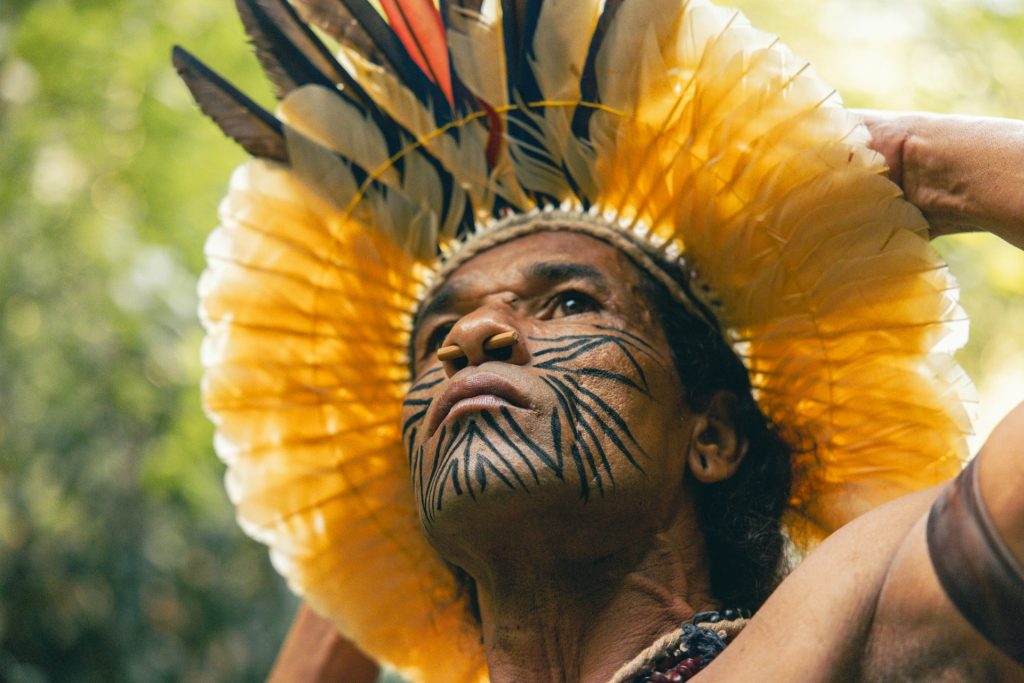Table of Contents
The answer to our planet’s environmental crisis was whispered to me by an elder in the heart of the Amazon rainforest. His eyes, deep with wisdom, reflected centuries of harmonious coexistence with nature.
Indigenous cultures hold the key to sustainable living, a truth I’ve discovered through years of travel and immersion in traditional communities around the world. Their practices and philosophies offer profound lessons for modern environmental stewardship.
Ancient Wisdom for Modern Problems
The concept of environmental stewardship isn’t new to indigenous peoples. It’s woven into the fabric of their existence, a fundamental part of their worldview that has sustained their communities for millennia.
In the Andes, I learned about the principle of “ayni,” a Quechua word that roughly translates to reciprocity. This isn’t just about give and take between people; it extends to the relationship between humans and the natural world.
I watched as farmers performed ancient rituals before planting, asking permission from the earth and promising to care for it in return. This deep respect for nature isn’t quaint superstition – it’s a sophisticated understanding of ecological balance.

The Interconnectedness of All Things
One of the most striking aspects of indigenous environmental philosophy is the recognition of interconnectedness. There’s no separation between humans and nature; we’re all part of the same web of life.
This became crystal clear during a ceremony with the Sami people in Arctic Scandinavia. As we sat in a traditional lavvu tent, the elder spoke of how the health of the reindeer, the vitality of the tundra, and the well-being of the people were all inextricably linked.
This holistic worldview stands in stark contrast to the compartmentalized thinking that often characterizes modern environmental policies. It offers a blueprint for more comprehensive and effective approaches to conservation.
Sustainable Resource Management: Lessons from the Elders
Indigenous communities have developed intricate systems of resource management that ensure sustainability over generations. These aren’t stagnant traditions, but dynamic practices that adapt to changing conditions.
In the Pacific Northwest, I witnessed the sophisticated salmon management techniques of coastal tribes. Their fishing practices, honed over thousands of years, ensure healthy salmon populations while still providing for the community’s needs.
What struck me was the long-term thinking involved. Decisions weren’t made based on immediate gain, but on how they would affect the seventh generation to come – a perspective sorely needed in our short-term-focused world..
Guardians of Biodiversity
Many of the world’s most biodiverse regions overlap with indigenous territories. This is no coincidence – indigenous stewardship has played a crucial role in preserving these ecological hotspots.
In the Amazon, I trekked with indigenous guides who could name and describe the medicinal properties of hundreds of plants. Their intimate knowledge of the forest ecosystem has been instrumental in protecting it from exploitation.
Indigenous peoples make up just 5% of the world’s population, yet their territories contain 80% of global biodiversity. Their role as environmental guardians cannot be overstated.
The Spiritual Dimension of Environmental Stewardship
For many indigenous cultures, environmental stewardship is deeply intertwined with spirituality. This adds a powerful motivational force to conservation efforts that goes beyond mere resource management.
Participating in a Lakota sweat lodge ceremony in South Dakota, I gained insight into how spiritual practices reinforce environmental ethics. The reverence for the elements – earth, air, fire, and water – wasn’t abstract; it translated into concrete actions to protect these resources.
This spiritual connection to nature offers a compelling counter-narrative to the materialistic worldview that has contributed to environmental degradation.
Resilience in the Face of Climate Change
Indigenous communities are often on the front lines of climate change, yet they demonstrate remarkable resilience and adaptability. Their traditional knowledge systems provide valuable insights for climate adaptation strategies.
In the Himalayas, I met with farmers who were adjusting their agricultural practices based on subtle environmental cues, passed down through generations. Their ability to read the landscape and respond to changes offers lessons for building climate-resilient communities.
The adaptive capacity of indigenous cultures, honed over centuries of living in diverse and often harsh environments, is a critical resource in our collective fight against climate change.
The Challenge of Balancing Tradition and Modernity
It’s important to note that indigenous cultures aren’t frozen in time. They face the challenge of preserving traditional knowledge while adapting to rapidly changing global realities.
In a Maasai village in Kenya, I saw solar panels next to traditional huts, and young people using smartphones to document their elders’ knowledge of medicinal plants. This blending of old and new represents both a challenge and an opportunity.
The key lies in finding ways to integrate traditional wisdom with modern technology and knowledge systems, creating sustainable solutions that respect cultural heritage while addressing contemporary challenges.

Learning from Indigenous Education Systems
Indigenous methods of passing down environmental knowledge offer valuable lessons for education systems worldwide. These approaches emphasize experiential learning, intergenerational knowledge transfer, and a holistic understanding of ecosystems.
In New Zealand, I visited a Maori school where environmental education was seamlessly integrated into all aspects of the curriculum. Students learned about native plants while tending the school garden, and traditional stories were used to teach ecological principles.
Incorporating elements of indigenous education models into mainstream systems could help foster a new generation of environmentally conscious citizens.
The Role of Indigenous Women in Environmental Stewardship
In many indigenous cultures, women play a central role in environmental stewardship, often serving as the primary keepers of traditional ecological knowledge.
During a stay with a Mayan community in Guatemala, I was struck by the depth of environmental knowledge possessed by the women. They were the ones who managed seed banks, ensuring crop diversity and food security for the community.
Recognizing and supporting the role of indigenous women in conservation efforts is crucial for effective environmental stewardship.
Biopiracy and the Protection of Indigenous Knowledge
As the value of indigenous knowledge becomes more widely recognized, there’s an increasing need to protect it from exploitation. Issues of biopiracy – the unauthorized use of indigenous knowledge for commercial gain – are a growing concern.
I’ve seen the impact of this firsthand in the Amazon, where traditional plant knowledge has been appropriated by pharmaceutical companies without proper compensation or acknowledgment of indigenous communities.
Developing fair and ethical frameworks for sharing indigenous knowledge while protecting indigenous rights is a critical challenge in the interface between traditional wisdom and modern environmental management.
Restoring Degraded Ecosystems: Indigenous Techniques
Indigenous knowledge isn’t just about preserving pristine environments – it also offers valuable insights for restoring degraded ecosystems.
In Australia’s arid interior, I witnessed Aboriginal land management techniques being used to rehabilitate overgrazed rangeland. These methods, based on thousands of years of experience, were proving more effective than many modern approaches.
As we face the challenge of restoring ecosystems damaged by industrialization and climate change, indigenous restoration techniques offer a valuable toolkit.
The Global Impact of Local Wisdom
While indigenous environmental practices are often deeply rooted in specific local contexts, their principles have global relevance. The challenge lies in translating these localized approaches to broader scales.
I’ve seen inspiring examples of this translation in action, from community-based conservation projects in Africa inspired by indigenous models to urban gardening initiatives in Europe drawing on traditional agricultural wisdom.
The key is to extract the core principles of indigenous environmental stewardship – respect for nature, long-term thinking, and recognition of interconnectedness – and apply them creatively to diverse contexts.

A New Path Forward
The wisdom of indigenous cultures offers us a roadmap to a more sustainable future. It challenges us to rethink our relationship with the natural world, to move from exploitation to stewardship.
As I reflect on the lessons learned from indigenous communities around the globe, I’m filled with hope. By combining ancient wisdom with modern knowledge, we have the tools to address our environmental challenges. The question is: are we ready to listen and learn?

I’m Simon St John, an editor who thrives on finding the profound moments in travel. With a background in crafting engaging stories for all generations, I delve into both grand adventures and simple discoveries. Through Tripnosis.me, I aim to showcase how travel can be a powerful catalyst for personal growth and deeper connections. My goal is to present fresh narratives that inspire and redefine your travel experience.




